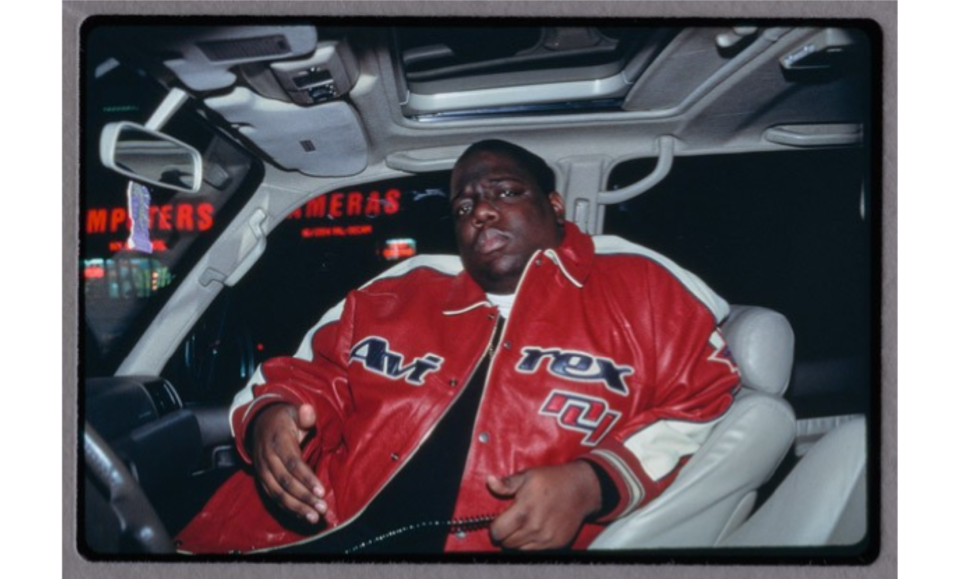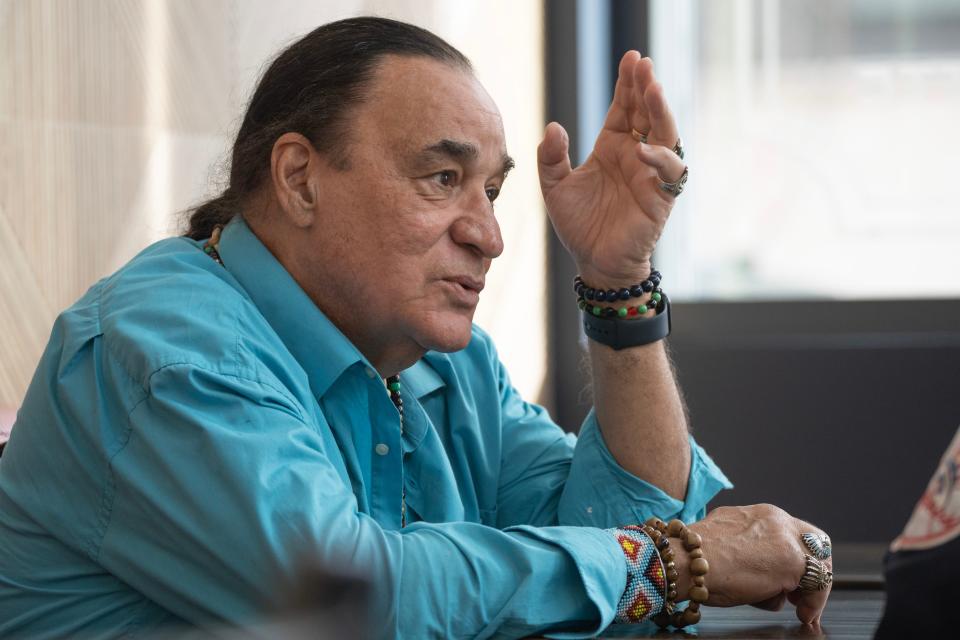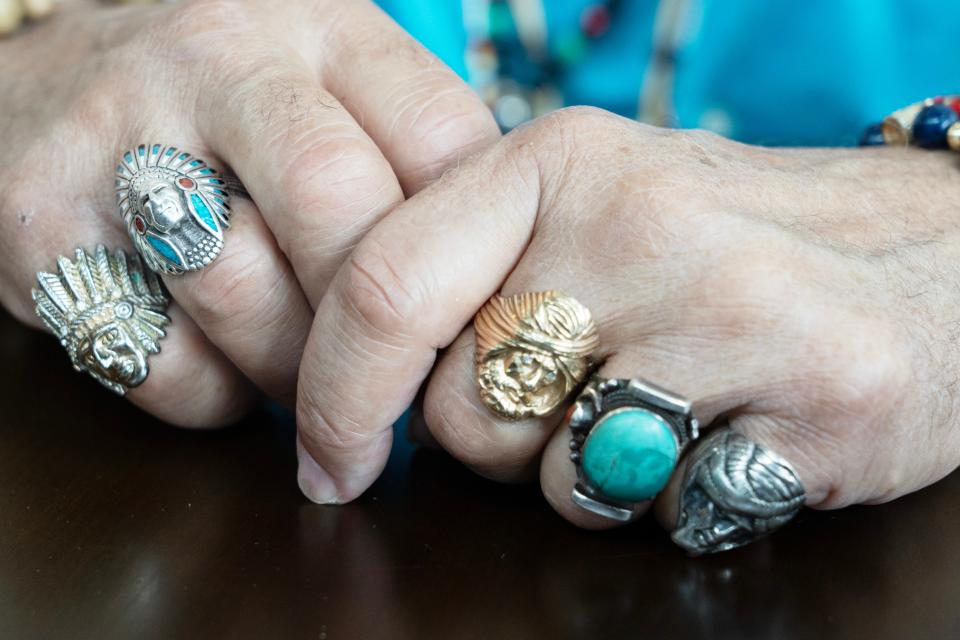Hip-hop photographer 'Brother Ernie' shows no signs of stopping after five decades
- Oops!Something went wrong.Please try again later.
The Notorious B.I.G. casting a serious gaze at the camera while sitting in his car. Lauryn Hill perched on a velvet couch like an African princess. Grandmaster Flash working the turntables at a block party.
They are among the 20,000 images captured by the Jersey City resident known as "Brother Ernie" taken since the early 1970s of New York graffiti artists, and then the budding MCs who pioneered rap or hip-hop music, and other celebrities.

And after five decades in photography, Ernie Paniccioli continues to inform the world of his work and of hip-hop.
"I still have nothing but respect for graffiti artists, and now I have expanded it and I have photographed in Canada, in France, in Italy and the U.K. and the West Coast," Paniccioli said in an interview with NorthJersey.com at his favorite Jersey City eatery, Cafe Lafayette.
He also teased to a possible future project.

"I have photographed around the world, and I have never let anyone see the work. So, anyone who's a fan of mine, they may get a surprise," Paniccioli said.
His daughter and business partner Melissa Paniccioli confirmed that the project is a book of his graffiti photos for which they are looking for a publisher.
Longtime fans of Paniccioli did get to see over 60 of his photos that were on display at the Grammy Museum Experience at Prudential Center in Newark during a four-month exhibition, "A Hip-Hop Life: Five Decades of Hip-Hop Music, Art and Culture," that ended in October.
Paniccioli, 75, said he was moved by the Grammy Museum's organizing this exhibition. The public and musical artists captured by his camera got to view his images.
"To be in something as prestigious as the Grammy Museum was a great turn-on to me," Paniccioli said.
He added, "Yes, a lot of artists came through, like Salt from Salt-N-Pepa, Treach from Naughty by Nature, Master Ace and a lot of other people. They love my work because it shows them in a way that they have never seen themselves or in a part of their lives they had forgotten."
Entertainment:Notorious B.I.G. secret shout-out revealed at 'A Hip-Hop Life' Grammy exhibit in Newark
More:Hip-hop photographer retrains his lens on BLM, insurrection
From the streets to the museum
The honor for Paniccioli in such a formal setting was a far cry from when he set out to photograph the graffiti artists spray-painting walls on buildings in his native Brooklyn starting in 1973. The son of Cree Indian and Italian parents, Paniccioli, who had a fascination with photography from his youth, wanted to capture the elaborate art he would see on his way home from his job at a telephone company.
Story continues below gallery
"The reason I picked up a camera was because everywhere I went there was graffiti. I go to show my friends and a week later it would be gone, two days later it would be gone, a day later it would be gone, and that's crazy," Paniccioli recalled. "It was transient. You click your fingers and it's gone. The people risk getting arrested, they risk getting bitten by police dogs, risk getting beaten up by other graffiti artists."
Soon, he was snapping pictures across Manhattan, Queens, the Bronx and New Jersey of graffiti art, winning the trust of the artists who thought he was either police or a "little insane" for taking an interest in their work. His relationship with them led to his capturing the early days of New York's hip-hop scene, with DJ's spinning records on turntables at block parties and dancers who created the "breakdancing" form.
His career would later bring him face to face with not only rap and R&B greats, but other legends in show business such as Michael Jackson, Frank Sinatra and Tony Bennett. He would also author several books featuring his photography: "Hip Hop at the End of the World," "Who Shot Ya?", "Back in the Days" and "They Call It Graffiti."
One of his fans is the noted writer Kevin Powell, a Jersey City native and co-author of "Who Shot Ya?" who sang his praises of Paniccioli to NorthJersey.com.

"Ernie Paniccioli's photography is for hip-hop icons what Annie Leibovitz was for rock-and-roll royalty: a gigantic contribution to understanding an aspect of American culture and history that has changed the entire globe ... and he has done his life work, against all odds, with authority, compassion, humor and the awesome intellect to connect the dots for us all," Powell said.
A previous version of this article stated that Ernie Paniccioli was to appear in a documentary.
Ricardo Kaulessar is a culture reporter for the USA TODAY Network's Atlantic Region How We Live team. For unlimited access to the most important news, please subscribe or activate your digital account today.
Email: kaulessar@northjersey.com
Twitter: @ricardokaul
This article originally appeared on NorthJersey.com: Hip-hop visual historian from Jersey City continues championing artform

